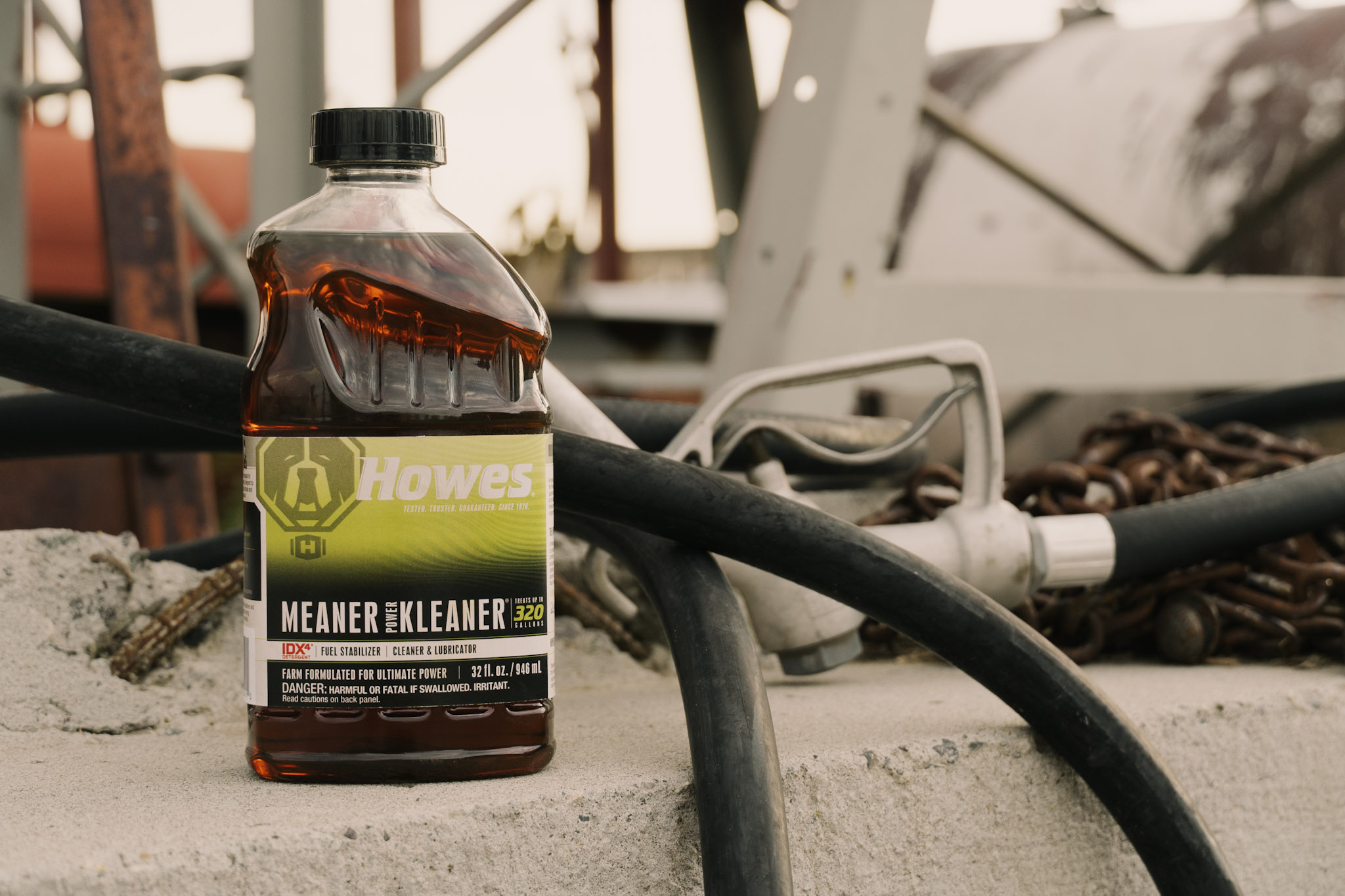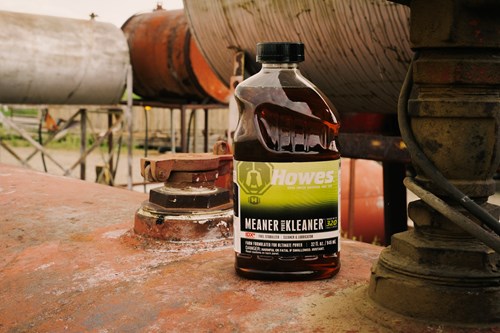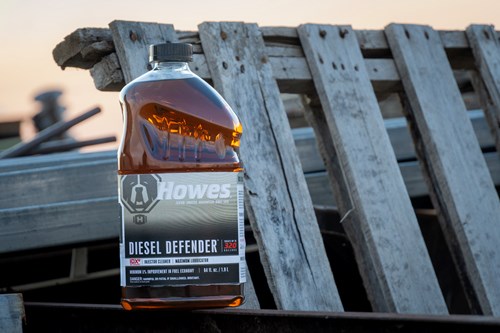
09/30/25
By Rich Guida
Table of Contents
Farmers depend on diesel fuel to keep their tractors, combines, semi trucks, and other heavy equipment running. But did you know that the diesel sitting in your farm’s storage tank could be hiding trouble? Many hard starts, clogged filters, injector failures, or loss of power aren’t caused by engine defects at all, but by contaminated diesel fuel. On-farm diesel storage tanks, especially those holding fuel through changing seasons, can accumulate water, rust, microbial growth, and sediment. These hidden enemies in your fuel tank can quietly wreak havoc on your equipment if left unchecked. We’ll uncover the most common contaminants lurking in farm diesel tanks, explain how they damage your fuel system and hurt performance, and show you how to clean your tank and protect your diesel fuel.
Several fuel contaminants can build up in a farm’s diesel storage tank over time. Here are the big four to watch out for:

Once these hidden enemies invade your fuel, they begin to cause serious problems for your machinery:
In short, a contaminated farm diesel tank can quietly cause everything from minor performance issues to major downtime. Knowing the warning signs can help – for example, clogged filters, a foul odor from the tank, dark or hazy fuel, or a drop in power are all symptoms of diesel fuel contamination. But the best strategy is to prevent these problems from happening in the first place.
When it comes to “diesel algae” and other contaminants, an ounce of prevention is worth a pound of cure. It is far easier and cheaper to keep water and microbes out of your fuel than to deal with a full-blown sludge infestation later. In fact, experts agree that once “diesel algae” (microbes) take over a tank, removal is costly and time-consuming – you may even have to dispose of fuel or hire professionals to clean the tank. So, what preventive steps can you take?
Remember, preventative steps may take a bit of time now, but they save a lot of headaches down the road. It’s much harder and more expensive to get rid of “diesel algae” once it has taken hold than it is to prevent it. In the next section, we’ll cover what to do if you already have contamination, and how to clean your tank and fuel system safely.
If you suspect your farm’s diesel tank is contaminated – for example, you’ve found water or sludge, or your filters keep clogging – don’t panic. You can often clean the tank and salvage the situation before it causes severe damage. Here are some pro tips for how to clean a diesel fuel tank:
At this point, you might be wondering how to keep your diesel fuel clean after you’ve gone through the trouble of cleaning a tank. This is where diesel fuel additives come in. A quality diesel additive can prevent water-related issues, clean up deposits, and protect your fuel system on a day-to-day basis. Howes Products, a company with a long history in diesel care, offers two key additives for farmers: one for tank cleaning and storage, and one for everyday protection of your equipment fuel. Using these can be your secret weapon against hidden fuel tank enemies.
When it’s time to deep-clean your fuel system or prepare diesel for storage, Howes Meaner Power Kleaner is the go-to additive. Meaner Power Kleaner is farm-formulated to tackle the kinds of problems we’ve been talking about. This additive uses an advanced IDX4® detergent to aggressively clean out deposits and slime from your fuel system and tank walls. It destroys even the toughest injector deposits and then prevents them from coming back. If your injectors have been sticking or if you suspect residue from “diesel algae”, this will clear it up.
Importantly, Meaner Power Kleaner also stabilizes stored fuel and eliminates sediment formation. That means it helps keep your diesel fresh over months of storage, so it doesn’t break down into gums or varnish. Farmers often store diesel through the off-season, and this additive ensures that fuel will still be good (and your tank clean) when you need it. It’s effective in all diesel blends – whether you use ultra-low sulfur diesel or biodiesel from farm sources, it’ll work.
One of the biggest benefits is water removal. Meaner Power Kleaner safely removes water from the fuel by demulsifying it. Unlike some products that use alcohol to disperse water (essentially mixing water into the fuel, which then goes through your engine – not good!), this additive does not use any harmful alcohols or solvents. It causes water to drop out of the fuel so it can be filtered or drained, eliminating the environment that promotes microbial growth. By getting rid of water, you’re taking away the thing that microbes need to grow. In other words, Meaner Power Kleaner is a preventative diesel algae treatment in the sense that it makes your tank an unfriendly place for microbes. Remember, the best diesel algae treatment is prevention, and that’s done by keeping water out and fuel clean.
Meaner Power Kleaner also adds a lubricity boost to your fuel. Today’s Ultra Low Sulfur Diesel (ULSD) can be drier and less lubricating, which is hard on pumps and injectors. This additive introduces vital lubricity back into the fuel, protecting those parts and even improving engine performance in the process. It’s a nice bonus while you’re primarily using it to clean and stabilize fuel.
To use Meaner Power Kleaner, you simply add it to your tank or storage fuel at the recommended treatment ratio. It’s concentrated: the formula treats three times more fuel than competing products, making it cost-effective. For a heavily contaminated tank, you might do a “shock” dose (follow Howes’ guidelines on the bottle). For routine prevention, you use a smaller maintenance dose. Either way, it’s an easy pour-in solution that goes to work immediately. After using it, many farmers notice improved power and smoother running engines because their injectors are cleaner and fuel is healthier.

While Meaner Power Kleaner is excellent for periodic tank clean-up and storage, Howes Diesel Defender is designed for continuous, everyday use in your fuel. Diesel Defender is a multi-functional additive that provides maximum lubrication, cleaning, and water removal in one package. Think of it as a daily vitamin for your diesel fuel system that keeps those “hidden enemies” from gaining any ground.
One standout feature is Diesel Defender’s lubricity. It contains up to 2.5 times more lubricating power than most competing additives. This is crucial for farm equipment because today’s diesel fuel lacks sulfur, which reduces its natural lubrication. By using Diesel Defender regularly, you coat and protect your fuel pump, injectors, and upper cylinders with a slick layer that significantly reduces wear. In fact, independent lab tests showed Diesel Defender treated fuel exceeding even strict European lubricity standards for wear protection. Fewer wear scars mean those expensive diesel injectors last longer.
Diesel Defender also uses the same advanced IDX4® detergent technology to keep injectors clean. It will attack and remove carbon deposits and varnish in the fuel system, even tackling stubborn internal diesel injector deposits (IDIDs) that some additives can’t handle. With regular use, it not only cleans up existing deposits but prevents new ones from forming, keeping your injectors spraying like new. Diesel Defender can clean the entire fuel system within about three treated fill-ups. That means improved combustion, more power, and a smoother-running engine once those deposits are gone.
Just like Meaner Power Kleaner, Diesel Defender is free of any harmful alcohols or solvents. It demulsifies water, gathering and dropping it out of the fuel so your separator can take it out. By safely removing water, it ensures that only pure diesel is going into your engine to be burned. This prevents the corrosion and injector damage that water can cause, and it robs microbes of the moisture they need to grow. Major engine manufacturers actually prefer this method of water removal (demulsification) over emulsifying additives, because it physically gets water out of the system. With this knowledge, you can trust that Diesel Defender is helping keep your fuel dry and your tank free of microbe-friendly conditions.
One thing farmers will love: Diesel Defender guarantees at least a 5% increase in fuel economy when used regularly. Since Diesel Defender works to clean injectors (ensuring a fine, efficient spray) and improve combustion with cetane boosters, it makes your engine burn fuel more completely. A clean burn means more energy from each gallon and less wasted fuel out the exhaust. Over time, that 5% (or more) improvement can save a significant amount of fuel, a major expense for every farm. Users also report better throttle response and even quieter operation due to the cetane improvement and lubrication.
Using Diesel Defender is simple: add the recommended amount to your diesel whenever you fill up or top off the farm tank. It’s formulated for year-round use. In cold winter months, you might pair it with a dedicated anti-gel (like Howes Diesel Treat) if temperatures drop very low (Diesel Defender itself isn’t an anti-gel). But for spring, summer, and fall, Diesel Defender is ideal for keeping fuel systems clean and lubricated. And it’s completely safe for all diesel engines and emission systems (no alcohol, no solvents, and it won’t harm particulate filters or injectors). In fact, all Howes additives can be used together without issue, so you can fortify your fuel as needed.

Diesel fuel is the lifeblood of your farm’s equipment. And, like any lifeblood, keeping it pure is critical. The hidden enemies in farm fuel tanks – water, rust, algae (microbes), and sediment – may be out of sight, but they should never be out of mind. With a little preventive care and the right additives, you can ensure these contaminants don’t get a foothold in your fuel system. Prevention really is key: a few minutes spent draining water or adding a diesel fuel stabilizer like Howes Meaner Power Kleaner will spare you hours of cleaning sludge or hundreds or thousands of dollars in repair bills. Farmers who treat their fuel well enjoy easier starts, longer injector life, better fuel economy, and reliable performance all season.
In summary, keep water out of your diesel, keep your tank clean, and use quality diesel fuel additives to protect your investment. Howes Products offers farmer-proven solutions – from Meaner Power Kleaner for tank cleaning and storage treatment to Diesel Defender for everyday protection and performance boost. With these tools in hand, you can confidently say goodbye to diesel algae, rusty tanks, and clogged filters. Your tractors and combines will thank you with more power, efficiency, and uptime on the farm. Keep an eye on what’s in your fuel tank, and you’ll keep your operation running strong from planting through harvest and beyond. After all, a clean tank means clean fuel, and clean fuel means a happy, healthy diesel engine.